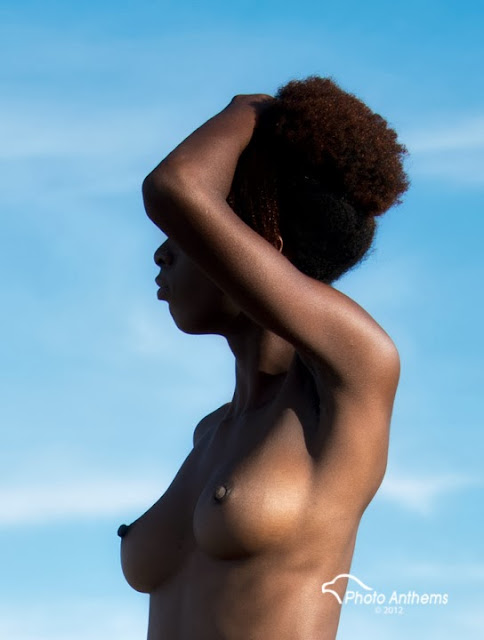 |
| Anonymous Art Model, © 2012 Terrell Neasley |
“Diversity may be the hardest thing for a society to live with, and perhaps the most dangerous thing for a society to be without. ”
To my knowledge, this is the first time I've come to address this topic on this blog. I've attempted to keep this blog mainly about photo-related issues, concerns, happenings and personal stories on my escapades. Conversely, I've avoided controversial topics and leave it to the others to debate those issues. There are certainly enough who do this. I've spent a good chunk of my life being an advocate of bringing to light the plight of African-Americans and the challenges we face on having an equal footing on this planet. I've always tried to be an ambassador for people of color and minorities in general, regardless of color. I have frequently found myself in positions where I have been the sole minority on a team, department, platoon, class, or group. In those situations I've wanted to not only represent myself in a way as to demonstrate that my Mama taught me manners, but also to fulfill that ambassador role for minorities to people that might not otherwise be able to relate. It was even one of my secondary duties in the military as I was trained and certified to teach and be the Equal Opportunity Representative for soldiers in my company or battalion and adviser for my commanders.
Photography is another area that I find myself in a similar light. In my undergrad years, I was the only black male student in the Finance department. My graduate time was much the same. Today in photography, I certainly notice the difference in the minority representation in the field that I so love. I've talked about it amongst peers on a few occasions. I've discussed it more often with black peers and we might often joke at the predicament we find ourselves in.
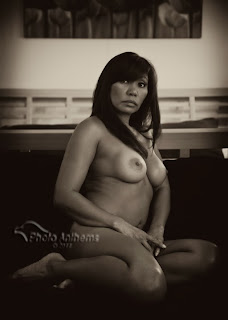 |
| Art Model, VikiVegas ©2011 Terrell Neasley |
So why are there so few black photographers? Its definitely a challenge to try to ascertain exactly why this is. Ranger school and being an Army Ranger was still a finite universe in which I was able to interview people and pull the statistics that allowed me to extrapolate interesting points to draw conclusions based on empirical data. Photography is way too broad a field to use the same methodology. So how do you find out why this is?
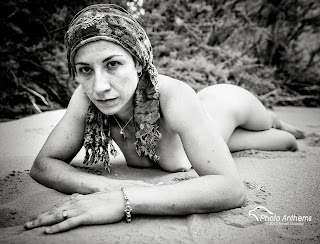 |
| Art Model, Leslie ©2013 Terrell Neasley |
I've been involved with many photographers in Las Vegas since I've been here. I had my own group, the Las Vegas Art Model's Group that helped photographers work with models and advance the art nude genre. Concurrently, I helped run the Las Vegas Photographic Society with my buddy Garret Winslow. Every one of our monthly meetings I spoke in front of the group and made myself available for advice and consult to photographers who took advantage of that fact often, both during and between meet-ups. During this time, I've met few black photogs and even FEWER who were on the professional level.
Allen Murabayashi, just did a blog post on the Photoshelter Blog site, "Photography’s Old White Guy Problem". In it, he gives thumbnail images of the major photographers who train us from Canon's Explorers of Light, Nikon's Ambassadors, and X-Rite's Colorati. The same goes for some of the major photo conventions such as WPPI speakers and Photoshop World instructors, which I attend on a regular basis. I see two black guys on a regular basis, Terry White and Matthew Jordan Smith. I invite you to take a look at that blog post.
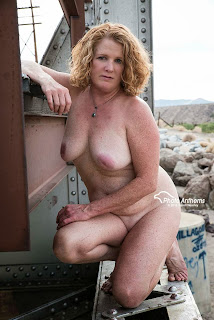 |
| Art Model, SuzN ©2013 Terrell Neasley |
"...However, the actual numbers state that 42.8% of all professional photographers are female. Not so bad, right? But the report goes on to clarify something I’d already suspected: While almost 60% of professional photographers are men, 60% of photographers under 35 are women. The majority of veteran, successful photographers are, in fact, men."
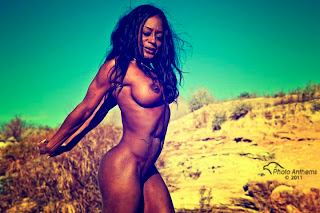 |
| Art Model, Dominique ©2011 Terrell Neasley |
I'm not saying I'm on the Tiger Woods scale of photo, but hear me out. Bringing in a different perspective will only enhance the quality of photo. And placing more people of color in the visible forefront encourages more minority kids, amateurs, and pro to step up their game. I can assure you...it might not make a difference to some people, but when you see somebody esteemed who looks like you, who can relate to you, and who has a sincere empathy on where you come from, its way more encouraging than listening to another white guy tell me, "Hey! You can do it". Think of it as inspiring black youths by giving them people they can inspire to be like. And by no means do I imply blacks and minorities should be "given" anything. But as I look at the faces of these Nikon Ambassadors and Canon Explorers of Light, am I supposed to infer that these photographers and trainers were the obvious choices because there were no minorities good enough to speak, train, or inspire fellow photographers as well as them?
Very good points. I heard one of the great photographers (who I can't remember right now) state there is always room for more good photographers. I agree.
ReplyDeleteI look at photography the same as food. I love trying food from all over the world. I may not like many of it, I am glad it is there because it pushes the culinary arts further. As foods go through fusions and mix with other types, the new types can be even better.
The more photographic visionaries out there make me a better photographer. They challenge my art by the media, method, craft, and messages they use. I may not like all of them, but if they are made with fine craft and thought, I will be different after seeing them.
I wonder if photography being a white man's game is similar to down hill skiing. Most famous skiers are white as well. Part of this may be due to the traditional expense of getting into photography (or skiing) and only rich whites could afford to get into. With the opening accessibility of photography getting easier and cheaper, maybe more visionaries from around the world will be able to adopt it as an outlet.
I think Frederick Van Johnson (TWiP) is another strong black photographer/ representative along with you. With that said, it is sad I can't list any more off the top of my head.
Seems like we've been still dealing with and talking about these same issues on one scale or another since forever. Can we be hopeful? I don't always know. Sometimes I am. I'll come across people who have a genuine heart. Then there are those days where you see some and think there's just no hope for humanity.
ReplyDelete